Traveling through chemistry is a fascinating adventure into markets, products, applications and peoples lives.
Whether you are a chemist, an engineer, or just a curious learner, you can spend hours discussing and deliberating the appropriate segmentation as well as the upstream and downstream limits of the caleidoscopic family called specialty chemicals. One fixed point remains: the BUSS-Loop® Reactor will always accompany you.
Although perhpas best suited for gas-liquid reactions, it can handle any reaction that requires high mass-transfer, heat-transfer, removal of a gaseous by-product and/or high throughput processes needing consistent high-quality product. What follows is a sampling of markets and applications that have successfully used BUSS-Loop® Reactor Technology in industrial scale production.
SELECTED SPECIALTY CHEMICAL APPLICATIONS OF THE BUSS-LOOP® REACTOR
Flavors & Fragrances
The Flavor and Fragrance Industry is embedded in everyone's daily life and carries a universe of chemical applications.
In order to obtain flavors and scents that make the difference in products perception and experience, the industry strives to synthesize and/or functionalize molecules and substances by means of various reactions, including hydrogenation, oxidation, chlorination or phosgenation, among others. The BUSS-Loop® Reactor and our distinctive process development approach, allow us to be a reference point for any market player who wants to develop or optimize a process and scale it up, to improve efficiency and performance, optimize costs or make their process more sustainable.
Noteable developments in recent years are the hydrogenation of α-pinene and the oxidation of iso-eugenol to obtain vanillin, the major flavor component of vanilla and one of the most used ingredients in the aroma industry.

Sugar Substitutes
There is a wide variety of sugar substitutes on the market, but they all have one thing in common: they provide a sweet taste similar to that of sugar but contain significantly less calories.
Examples include Aspartame, Saccharin, Stevia and the most widely used sweetener, sucralose. Sucralose is about 600 times sweeter than sugar and is produced through the chlorination of sucrose or raffinose. One of the main steps in the production of Sucralose is the substitution of three hydroxyl groups with chlorine atoms. This is accomplished through the phosgenation of sucrose, a reaction that is successfully performed in the BUSS-Loop® Reactor. Indeed, Buss ChemTech participated in some of the process development work for Tate & Lyle, the discoverer of this molecule.
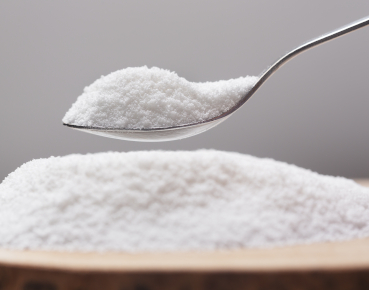
Specialty Amines
Specialty Amines like PMDETA or HALS can be successfully manufactured using the BUSS-Loop® reactor.
HALS (Hindered Amine Light Stabilizers) are used as additives to protect polymers from heat- and light-induced degradation. BUSS ChemTech has supported industry leaders in their development since the 1980's, including successful experiments for the synthesis of hexamethylene-bis-triacetone diamine (HMBTAD) and 4-hydroxy-2,2,6,6-tetramethylpiperidine (HTMP), among the others.
Specialty Amines like Pentamethyldiethylenetriamine (PMDETA) are important catalysts for polyurethane systems.
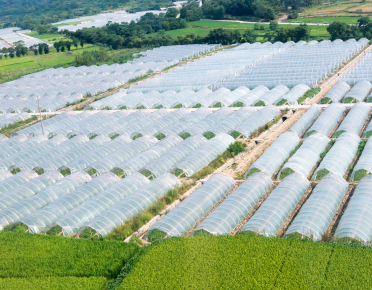
Phenol Derivatives
Phenol is an aromatic organic compound that represents a connection point between petrochemicals and downstream products.
This comes about by virtue of the various functionalization that is possible through reactions including alkylation and chlorination, among others, or intermediate steps to further processing.
With the BUSS-Loop® reactor, we successfully accomplished phenol chlorination and phenol alkylation with butylene, and other process development work.
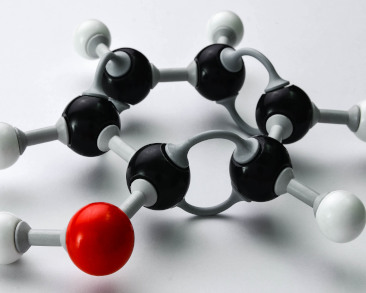
Agrochemicals
Agrochemicals are generally intended as chemical products used in agriculture. In most cases, agrochemical refers to pesticides including insecticides, herbicides, fungicides and nematicides.
A modest range of chemical reactions types are used daily to manufacture thousands of products. BUSS-Loop® Reactor Technology has been a reliable partner of industry leaders for decades for reactions such as hydrogenation, oxidation, chlorination, and the functionalization of various groups.
Notably, the BUSS-Loop® Reactor played a key role in the development of S-Metolachlor, a worldwide milestone in the discipline of asymmetric catalysis.
The ethylation of o-toluidine or catalytic hydrogenation of dichloronitrobenzene (DNB) to dichloroaniline (DCA) are well-known achievements of the BUSS-Loop® Reactor by the industry.

Dyestuff & Pigments
Dichloroanilines (DCA) are important compounds used in the production of dyes and crop protection chemicals as well as certain drugs.
DCAs consist of an aniline ring substituted with two chlorine atoms. There are six isomers with the chlorine atoms position varying around the ring relative to the amino group.
The isomer 2,5-DCA, is a precursor to dyes and pigments, especially “Pigment Yellow 10” which is commonly used for yellow road markings in the US. 2,5-DCA is produced by the catalytic hydrogenation of 1,4-dichloro-2-nitrobenzene (1,4-DCNB). Another isomer, 2,6-DCA, is a precursor to certain drugs. One example is the NSAID diclofenac. This isomer can also be produced through catalytic hydrogenation, but in this case, of 2,6-dichloronitrobenzen (2,6-DCNB).
Both of these isomers (and others) can be produced using BUSS-Loop® Reactor Technology. Batch and continuous processes are available on demand, as well as for other nitrobenzene and chloronitrobenzene compounds.
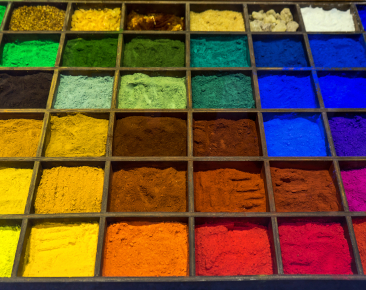
Non-phthalate plasticizers
With our BUSS-Loop® Reactor Technology, we significantly contributed to the market leader’s development of non-phtalate plasticizers. contributing to the world's sustainability journey.
Remarkable is the contribution, by means of hydrogenation, for dioctyl cyclohexanoate (DOCH). Phthalate plasticizers are mainly added to Polyvinylchloride (PVC) to make it flexible, but since they are not tightly bound to the PVC molecules, they migrate from PVC products, thus entering the product, which often is consumed by humans.
Many phthalates are known carcinogens and reproductive and developmental toxicants, or endocrine disruptors. Therefore, in response to consumer and regulatory pressures, PVC building product manufacturers increasingly offer phthalate-free products. Reaction Technology from BUSS ChemTech can once again support the supply chain in the effort towards a more sustainable planet.

Specialty Anhydrides
Specialty anhydrides like hexahydrophthalic anhydride (HHPA) and methyl-hexa hydrophthalic anhydride (MHHPA) are widely used as key ingredients or additives for a variety of compounds.
In modern concrete, chemical admixtures continue to play a crucial role, with superplasticizers standing in the center of the technology. For polycarboxylate superplasticizers (PCEs) only, current global production volume far exceeds 10 million tons per year - even after more than 40 years from their invention.
These include applications in coatings, epoxy resins (as curing agents), polyester resins, adhesives, plasticizers, and pesticides, for example. HHPA and MHHPA are synthesized by hydrogenation of the respective tetra- and methyltetra-hydrophtalic anhydrides.
The BUSS-Loop® Reactor is the ideal tool for the hydrogenation step.

SELECTED SPECIALTY CHEMICAL APPLICATIONS OF THE BUSS-LOOP® REACTOR
Flavors & Fragrances
The Flavor and Fragrance Industry is embedded in everyone's daily life and carries a universe of chemical applications.
In order to obtain flavors and scents that make the difference in products perception and experience, the industry strives to synthesize and/or functionalize molecules and substances by means of various reactions, including hydrogenation, oxidation, chlorination or phosgenation, among others. The BUSS-Loop® Reactor and our distinctive process development approach, allow us to be a reference point for any market player who wants to develop or optimize a process and scale it up, to improve efficiency and performance, optimize costs or make their process more sustainable.
Noteable developments in recent years are the hydrogenation of α-pinene and the oxidation of iso-eugenol to obtain vanillin, the major flavor component of vanilla and one of the most used ingredients in the aroma industry.
Sugar Substitutes
There is a wide variety of sugar substitutes on the market, but they all have one thing in common: they provide a sweet taste similar to that of sugar but contain significantly less calories.
Examples include Aspartame, Saccharin, Stevia and the most widely used sweetener, sucralose.
Sucralose is about 600 times sweeter than sugar and is produced through the chlorination of sucrose or raffinose.
One of the main steps in the production of Sucralose is the substitution of three hydroxyl groups with chlorine atoms. This is accomplished through the phosgenation of sucrose, a reaction that is successfully performed in the BUSS-Loop® Reactor. Indeed, Buss ChemTech participated in some of the process development work for Tate & Lyle, the discoverer of this molecule.
Specialty Amines
Specialty Amines like PMDETA or HALS can be successfully manufactured using the BUSS-Loop® reactor.
HALS (Hindered Amine Light Stabilizers) are used as additives to protect polymers from heat- and light-induced degradation. BUSS ChemTech has supported industry leaders in their development since the 1980's, including successful experiments for the synthesis of hexamethylene-bis-triacetone diamine (HMBTAD) and 4-hydroxy-2,2,6,6-tetramethylpiperidine (HTMP), among the others.
Specialty Amines like Pentamethyldiethylenetriamine (PMDETA) are important catalysts for polyurethane systems.
Phenol Derivatives
Phenol is an aromatic organic compound that represents a connection point between petrochemicals and downstream products.
This comes about by virtue of the various functionalization that is possible through reactions including alkylation and chlorination, among others, or intermediate steps to further processing.
With the BUSS-Loop® reactor, we successfully accomplished phenol chlorination and phenol alkylation with butylene, and other process development work.
Agrochemicals
Agrochemicals are generally intended as chemical products used in agriculture. In most cases, agrochemical refers to pesticides including insecticides, herbicides, fungicides and nematicides.
A modest range of chemical reactions types are used daily to manufacture thousands of products. BUSS-Loop® Reactor Technology has been a reliable partner of industry leaders for decades for reactions such as hydrogenation, oxidation, chlorination, and the functionalization of various groups.
Notably, the BUSS-Loop® Reactor played a key role in the development of S-Metolachlor, a worldwide milestone in the discipline of asymmetric catalysis.
The ethylation of o-toluidine or catalytic hydrogenation of dichloronitrobenzene (DNB) to dichloroaniline (DCA) are well-known achievements of the BUSS-Loop® Reactor by the industry.
Dyestuff & Pigments
Dichloroanilines (DCA) are important compounds used in the production of dyes and crop protection chemicals as well as certain drugs.
DCAs consist of an aniline ring substituted with two chlorine atoms. There are six isomers with the chlorine atoms position varying around the ring relative to the amino group.
The isomer 2,5-DCA, is a precursor to dyes and pigments, especially “Pigment Yellow 10” which is commonly used for yellow road markings in the US. 2,5-DCA is produced by the catalytic hydrogenation of 1,4-dichloro-2-nitrobenzene (1,4-DCNB). Another isomer, 2,6-DCA, is a precursor to certain drugs. One example is the NSAID diclofenac. This isomer can also be produced through catalytic hydrogenation, but in this case, of 2,6-dichloronitrobenzen (2,6-DCNB).
Both of these isomers (and others) can be produced using BUSS-Loop® Reactor Technology. Batch and continuous processes are available on demand, as well as for other nitrobenzene and chloronitrobenzene compounds.
Non-phthalate plasticizers
With our BUSS-Loop® Reactor Technology, we significantly contributed to the market leader’s development of non-phtalate plasticizers. contributing to the world's sustainability journey.
Remarkable is the contribution, by means of hydrogenation, for dioctyl cyclohexanoate (DOCH). Phthalate plasticizers are mainly added to Polyvinylchloride (PVC) to make it flexible, but since they are not tightly bound to the PVC molecules, they migrate from PVC products, thus entering the product, which often is consumed by humans.
Many phthalates are known carcinogens and reproductive and developmental toxicants, or endocrine disruptors. Therefore, in response to consumer and regulatory pressures, PVC building product manufacturers increasingly offer phthalate-free products. Reaction Technology from BUSS ChemTech can once again support the supply chain in the effort towards a more sustainable planet.
Specialty Anhydrides
Specialty anhydrides like hexahydrophthalic anhydride (HHPA) and methyl-hexa hydrophthalic anhydride (MHHPA) are widely used as key ingredients or additives fass=or a variety of compounds.
These include applications in coatings, epoxy resins (as curing agents), polyester resins, adhesives, plasticizers, and pesticides, for example.
HHPA and MHHPA are synthesized by hydrogenation of the respective tetra- and methyltetra-hydrophtalic anhydrides.
BUSS-Loop® Reactor is the ideal tool for the hydrogenation step.
Contact Us
* Required fields
Your Contact

Gianluca Premoli
Business Manager Reaction Technology
Other Topics of Interest
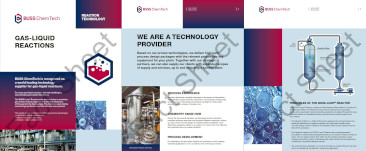
Fact Sheet:
Gas-liquid Reactions
The heart of our gas-liquid reaction process designs is the technology we invented in the late 1940’s and that we have been improving on ever since.
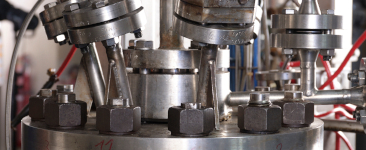
Our Development Capabilities
Every plant comes with guarantees. The basis of the guarantees, as well as the process design itself, is developed in our own extensive technical center.
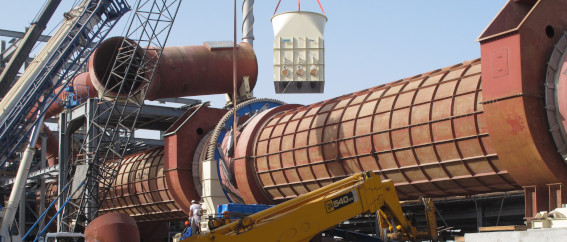
Scope of Project Delivery
From technology packages to modular and turnkey solutions, click below to find out about our range of services.